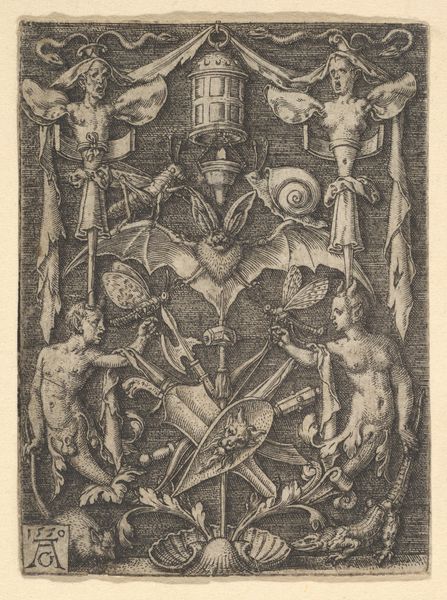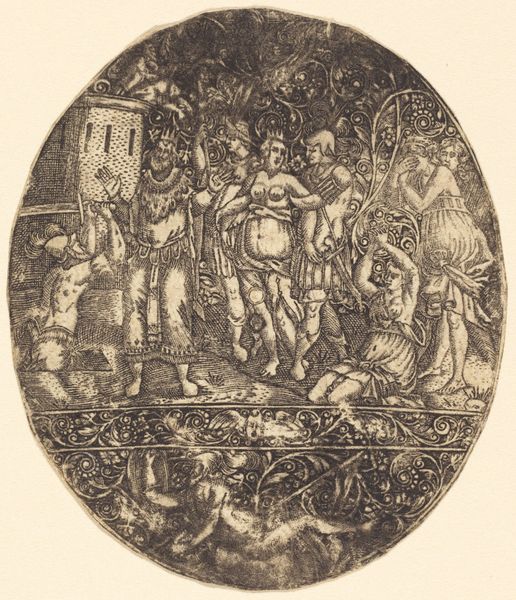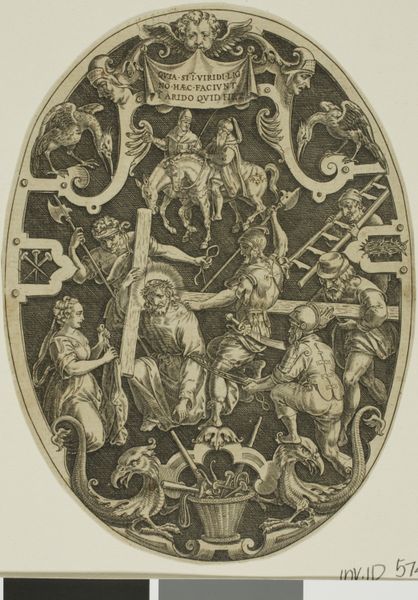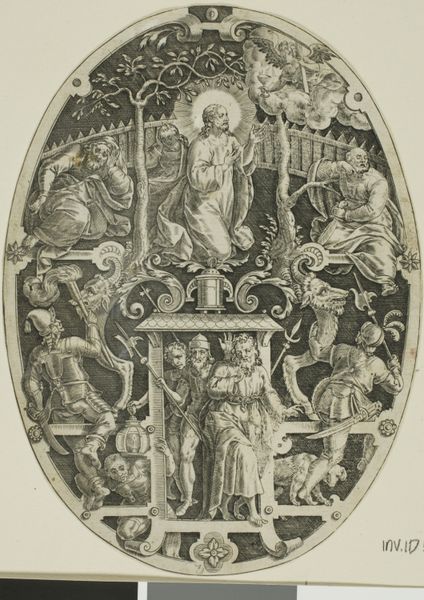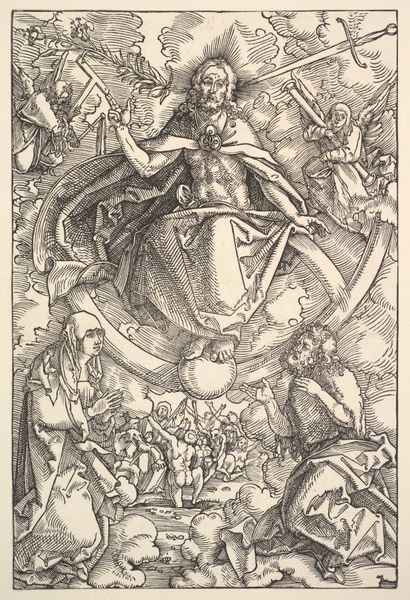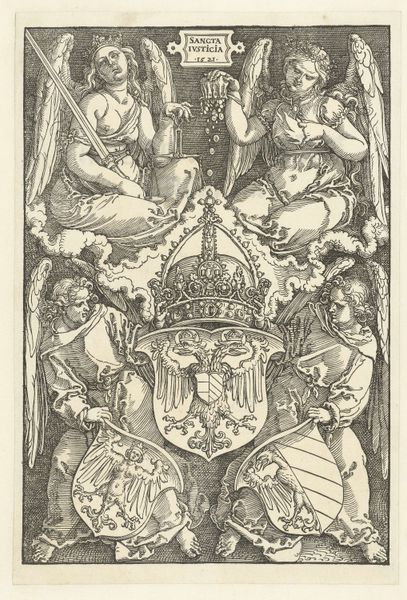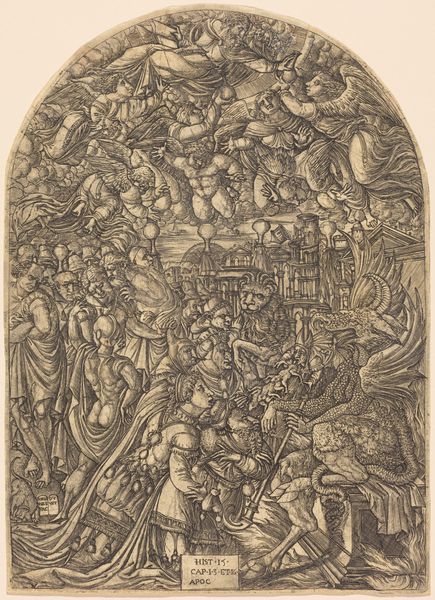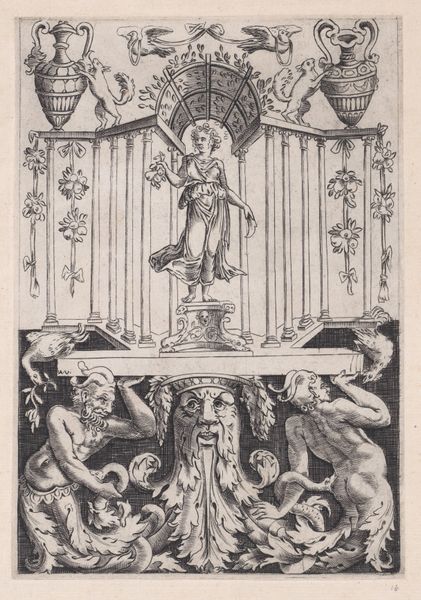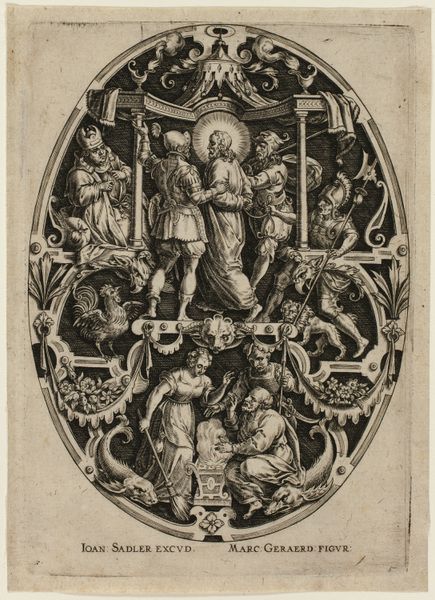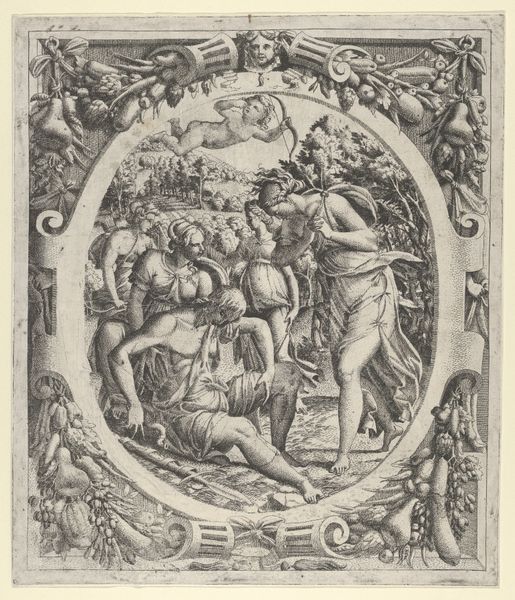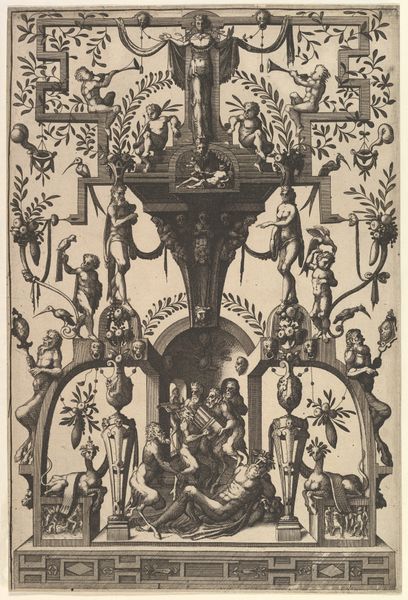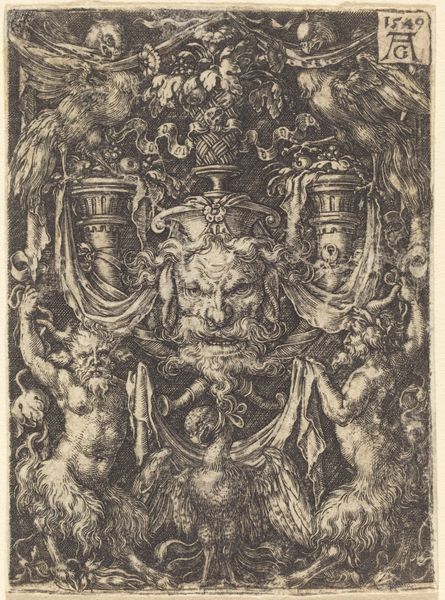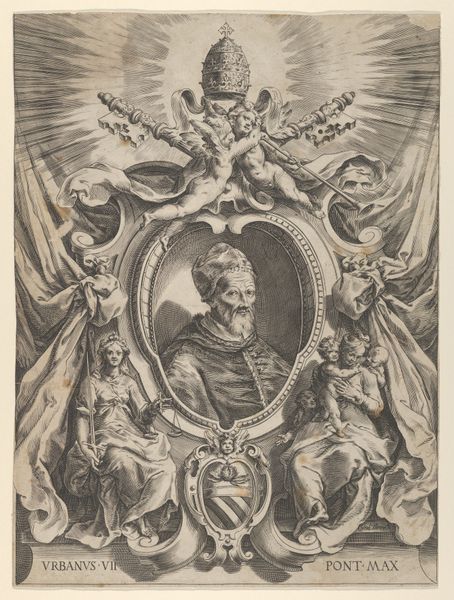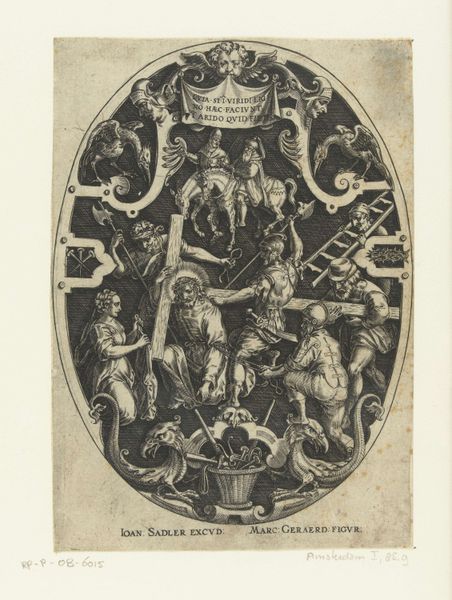
The Trinity with members of a brotherhood and a pope as protector of the infirm. Oval composition 1536 - 1614
0:00
0:00
drawing, paper, ink
#
portrait
#
drawing
#
pencil sketch
#
charcoal drawing
#
paper
#
11_renaissance
#
ink
#
pencil drawing
#
history-painting
#
italian-renaissance
#
watercolor
Dimensions: 197 mm (height) x 149 mm (width) (bladmaal)
Editor: Here we have "The Trinity with members of a brotherhood and a pope as protector of the infirm" by Cesare Nebbia, created sometime between 1536 and 1614. It's a drawing made with ink on paper. The oval composition is packed with figures, a whole social order seems to be on display here. What strikes you about this piece? Curator: I am immediately drawn to the materials and labor involved in creating this work. Think about the sourcing of the paper, the mixing of the inks, and the sheer manual skill required to render such detail. It invites questions about the economics of art production in the Renaissance. Who commissioned this? And what message were they intending to communicate through the skilled rendering of this scene? Editor: That’s interesting. I hadn’t really considered the actual physical making of it, but focusing on the materials does shift the perspective. Curator: Precisely. This drawing depicts the Trinity, but it's not just a theological statement. Nebbia is showcasing the material reality of faith in society. How do the different depictions of figures – the brotherhood, the Pope, those infirm at the bottom -- each influence your understanding of production? Editor: Now that you point that out, the lower class on a cart seems almost juxtaposed with the holiness in the heavens above. Are they the consumers, or maybe even, the laborers supporting this religious infrastructure? Curator: Exactly! Nebbia makes no attempts to hide the social strata that underpins even spiritual imagery. Consider too how the materials themselves – the ink and paper – may have been perceived differently by each social class. The means to possess an object made of those materials carries inherent power. Editor: So it's less about the spiritual message and more about the material conditions that allowed its creation and its use? Curator: Not necessarily 'less about', but certainly 'also about'. By focusing on the materials and production, we unearth hidden narratives of power and consumption within religious art. Editor: I see. Focusing on production adds a completely different, and richer layer to the interpretation. Curator: Indeed. By tracing the material and its journey, we understand not just the what, but also the how and the why behind the artistic choices and the society within which the art exists.
Comments
No comments
Be the first to comment and join the conversation on the ultimate creative platform.
